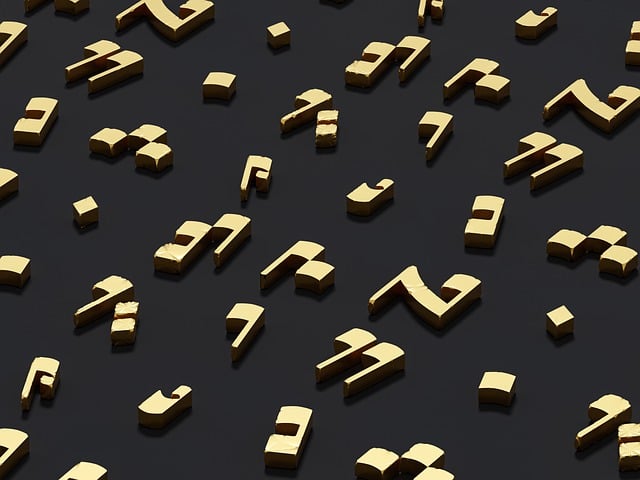Gregorian Chant is a form of plainchant, or unaccompanied sacred song, that has been used in the Catholic Church for centuries. It is named after Pope Gregory I, who is traditionally credited with organizing and codifying the chants. Gregorian Chant is characterized by its monophonic texture, free rhythm, and modal melodies. It is typically sung in Latin and is used in various liturgical settings, such as Mass and the Divine Office.
Table of Contents
History of Gregorian Chant in the Catholic Church
Gregorian chant is a form of plainchant that has been used in the Catholic Church for centuries. It is a form of sacred music that is sung in Latin and is known for its monophonic texture and unaccompanied vocal melodies. The history of Gregorian chant in the Catholic Church dates back to the early Middle Ages, when it was developed as a way to enhance the worship experience and bring a sense of reverence to the liturgy.
The origins of Gregorian chant can be traced back to Pope Gregory I, who reigned from 590 to 604 AD. It is believed that Pope Gregory I played a significant role in the development of this form of plainchant, although the exact extent of his involvement is still debated among scholars. Regardless of the specifics, it is clear that Gregorian chant became an integral part of the Catholic liturgy during this time and has remained so ever since.
One of the key characteristics of Gregorian chant is its monophonic texture, which means that it consists of a single melodic line without any accompanying harmonies. This simplicity is intentional, as it allows the focus to be on the text and the meaning behind the words being sung. The melodies of Gregorian chant are often characterized by their flowing and meditative quality, which is meant to inspire a sense of contemplation and prayerfulness in the listener.
Over the centuries, Gregorian chant has undergone various changes and adaptations, as different religious orders and regions have developed their own unique styles of plainchant. Despite these variations, the core principles of Gregorian chant have remained consistent, with an emphasis on simplicity, reverence, and devotion to the sacred texts of the liturgy.
In the modern era, Gregorian chant has experienced a resurgence in popularity, as more and more people are drawn to its timeless beauty and spiritual depth. Many Catholic churches and monasteries continue to use Gregorian chant in their worship services, and there are also numerous recordings and performances of this sacred music available for those who wish to experience it outside of a religious context.
In addition to its use in the Catholic Church, Gregorian chant has also had a significant influence on Western music as a whole. Many composers throughout history have drawn inspiration from the melodies and harmonies of Gregorian chant, incorporating elements of this sacred music into their own compositions. This influence can be seen in the works of composers such as Hildegard von Bingen, Palestrina, and even more contemporary artists like Arvo Pärt.
Overall, Gregorian chant holds a special place in the hearts of many Catholics and music lovers alike. Its rich history, timeless beauty, and spiritual significance continue to captivate audiences around the world, making it a truly enduring and cherished tradition in the Catholic Church. Whether experienced in a grand cathedral or through a simple recording, the power of Gregorian chant to uplift the soul and inspire devotion is undeniable.
Importance of Gregorian Chant in Liturgical Music
Gregorian chant is a form of liturgical music that has been an integral part of the Catholic Church for centuries. It is a form of plainchant, which is a monophonic, unaccompanied style of singing that is characterized by its flowing, melodic lines and lack of instrumental accompaniment. Gregorian chant takes its name from Pope Gregory I, who is traditionally credited with organizing and codifying the chants that were used in the Roman liturgy during his papacy in the 6th century.
One of the key reasons why Gregorian chant has remained an important part of the Catholic Church’s musical tradition is its ability to create a sense of reverence and contemplation during the celebration of the liturgy. The simple, unadorned melodies of Gregorian chant have a timeless quality that can help to create a sense of connection to the sacred mysteries being celebrated in the Mass. The chant’s flowing, meditative quality can help to create a sense of peace and tranquility, allowing worshippers to enter more deeply into the prayerful atmosphere of the liturgy.
Another important aspect of Gregorian chant is its ability to unite the faithful in prayer. Because Gregorian chant is sung in unison, it has the power to create a sense of unity and harmony among the members of the congregation. When the faithful join together in singing the chants of the Mass, they are not only participating in the liturgy but also expressing their unity as members of the Body of Christ. This sense of communal prayer can help to deepen the spiritual experience of the faithful and foster a sense of belonging and connection within the worshipping community.
In addition to its spiritual and communal benefits, Gregorian chant also has a rich historical and cultural significance within the Catholic Church. The chants of the Mass have been passed down through the centuries, preserving a musical tradition that dates back to the early days of Christianity. The melodies of Gregorian chant are rooted in the ancient traditions of the Church, reflecting the beauty and richness of the liturgical heritage that has been handed down from generation to generation.
Despite the many benefits of Gregorian chant, its use in the liturgy has declined in recent decades, as more contemporary styles of music have become popular in Catholic worship. However, there has been a renewed interest in Gregorian chant in recent years, as many Catholics have come to appreciate its timeless beauty and spiritual depth. In response to this renewed interest, many parishes and communities have begun to reintroduce Gregorian chant into their liturgical celebrations, recognizing its unique ability to enhance the worship experience and deepen the spiritual life of the faithful.
In conclusion, Gregorian chant holds a special place in the musical tradition of the Catholic Church, offering a unique blend of spiritual, communal, and historical significance. Its timeless melodies and meditative quality can help to create a sense of reverence and contemplation during the celebration of the liturgy, while its unifying power can foster a sense of unity and harmony among the faithful. As Catholics continue to rediscover the beauty and richness of Gregorian chant, they are sure to find that this ancient form of music has much to offer in deepening their experience of worship and prayer.
Characteristics of Gregorian Chant

Gregorian chant is a form of plainchant that has been used in the Catholic Church for centuries. It is a form of sacred music that is sung in Latin and is known for its monophonic texture, meaning that it consists of a single melodic line without any harmonies. This style of music is named after Pope Gregory I, who is traditionally credited with organizing and codifying the chants used in the Roman liturgy.
One of the key characteristics of Gregorian chant is its simplicity. The melodies are often based on a limited range of notes, making them easy to sing and remember. This simplicity allows the focus to be on the text being sung, which is usually taken from the Bible or other sacred texts. The melodies are also often free-flowing and without a strict meter, giving them a sense of fluidity and timelessness.
Another characteristic of Gregorian chant is its use of modes. These modes are scales that give the music a distinct flavor or mood. Each mode has its own unique set of intervals and characteristics, which help to create a sense of unity and coherence in the chants. The modes used in Gregorian chant are often based on ancient Greek musical theory and have been passed down through generations of singers.
One of the most striking features of Gregorian chant is its use of vocal techniques. Singers are trained to produce a pure, unadorned sound that is free from vibrato or other embellishments. This style of singing is meant to convey a sense of reverence and humility, allowing the text to speak for itself without any distractions. The use of vocal techniques also helps to create a sense of unity among the singers, as they strive to blend their voices together in a seamless and harmonious way.
In addition to its musical characteristics, Gregorian chant also has a rich history and tradition within the Catholic Church. It has been used in liturgical settings for over a thousand years and has been passed down through generations of singers and composers. The chants themselves have been preserved in manuscripts and books, which have been carefully copied and studied by scholars and musicians.
Despite its long history, Gregorian chant is still used in the Catholic Church today. It is often sung during Mass and other liturgical services, providing a sense of continuity and tradition for worshippers. The chants are also used in monasteries and convents, where they are sung as part of the daily prayer and worship of the religious community.
In conclusion, Gregorian chant is a unique and beautiful form of sacred music that has been an integral part of the Catholic Church for centuries. Its simplicity, use of modes, vocal techniques, and rich history all contribute to its enduring appeal and significance. Whether sung in a grand cathedral or a humble monastery, Gregorian chant continues to inspire and uplift those who hear it, connecting them to a tradition that stretches back through the ages.
Role of Gregorian Chant in Catholic Worship
Gregorian chant is a form of plainchant that has been used in the Catholic Church for centuries. It is a form of sacred music that is sung in Latin and is known for its monophonic texture, meaning that it consists of a single melodic line without any harmonies. Gregorian chant is named after Pope Gregory I, who is traditionally credited with organizing and codifying the chants in the 6th century.
One of the key roles of Gregorian chant in the Catholic Church is its use in liturgical worship. The chants are sung during Mass, the Liturgy of the Hours, and other sacred ceremonies. Gregorian chant is considered the official music of the Roman Catholic Church, and its use is highly encouraged in the liturgy.
The use of Gregorian chant in Catholic worship serves several important purposes. First and foremost, it is a form of prayer. The texts of the chants are often taken from the Bible or other sacred sources, and they are meant to inspire devotion and contemplation. By singing these ancient melodies, Catholics are able to connect with the sacred traditions of their faith and enter into a deeper spiritual experience.
In addition to its role as a form of prayer, Gregorian chant also serves a practical function in the liturgy. The chants are designed to be sung by the entire congregation, making them accessible to all worshippers. The simple melodies and repetitive nature of the chants make them easy to learn and sing, even for those with little musical training. This allows the entire community to participate actively in the worship service, creating a sense of unity and shared devotion.
Furthermore, Gregorian chant is believed to have a unique spiritual power. The ancient melodies are thought to have a calming and meditative effect on the listener, helping to create a sense of peace and reverence in the worship space. The chants are also believed to have the ability to lift the soul to a higher spiritual plane, allowing worshippers to connect more deeply with God and the sacred mysteries of the faith.
Overall, Gregorian chant plays a vital role in the worship life of the Catholic Church. Its ancient melodies and sacred texts help to create a sense of reverence and devotion in the liturgy, while also allowing the entire community to participate actively in the worship service. The spiritual power of the chants is believed to help worshippers connect more deeply with God and enter into a deeper spiritual experience. As a form of prayer, Gregorian chant continues to be a cherished tradition in the Catholic Church, enriching the worship life of believers and helping to create a sense of unity and shared devotion among the faithful.
Modern Interpretations and Adaptations of Gregorian Chant
Gregorian chant is a form of plainchant that has been used in the Catholic Church for centuries. It is named after Pope Gregory I, who is traditionally credited with organizing and codifying the chants used in liturgical worship. Gregorian chant is characterized by its monophonic texture, meaning that it consists of a single melodic line without accompaniment. This simplicity allows the text of the chant to be clearly heard and understood, making it a powerful tool for prayer and meditation.
In recent years, there has been a resurgence of interest in Gregorian chant, both within the Catholic Church and in secular music circles. Many people are drawn to the timeless beauty and spiritual depth of these ancient chants, which have been passed down through generations of monks and nuns. While Gregorian chant is still used in traditional Catholic liturgies, there are also modern interpretations and adaptations of these chants that appeal to a wider audience.
One popular modern adaptation of Gregorian chant is the use of electronic music and technology to create new versions of these ancient melodies. Artists like Enigma and Deep Forest have incorporated Gregorian chant into their music, blending the sacred with the secular in a way that resonates with listeners of all backgrounds. These modern interpretations of Gregorian chant bring a fresh perspective to this ancient tradition, making it accessible to a new generation of music lovers.
Another way that Gregorian chant has been adapted for modern audiences is through the use of choral arrangements and vocal ensembles. Groups like The Sixteen and Anonymous 4 have gained popularity for their performances of Gregorian chant, showcasing the beauty and complexity of these ancient melodies in a way that is both reverent and engaging. By bringing together talented singers and musicians, these ensembles are able to breathe new life into the chants of old, creating a rich tapestry of sound that captivates audiences around the world.
In addition to electronic music and choral arrangements, Gregorian chant has also found its way into popular culture through film and television. Movies like “The Da Vinci Code” and TV shows like “Game of Thrones” have featured Gregorian chant in their soundtracks, using these ancient melodies to create a sense of mystery and intrigue. By incorporating Gregorian chant into mainstream media, these productions have introduced a new generation of viewers to the beauty and power of these timeless chants.
Overall, the modern interpretations and adaptations of Gregorian chant serve to keep this ancient tradition alive and relevant in today’s world. Whether through electronic music, choral arrangements, or popular culture, these adaptations bring a fresh perspective to the sacred music of the Catholic Church, allowing it to resonate with a diverse audience. By embracing the past while looking towards the future, Gregorian chant continues to inspire and uplift listeners of all backgrounds, connecting them to a rich tradition of prayer and worship that spans centuries.
Conclusion
Gregorian Chant is a form of plainchant, or unaccompanied sacred song of the Roman Catholic Church. It is named after Pope Gregory I, who is traditionally credited with its development. Gregorian Chant is characterized by its monophonic texture, free rhythm, and modal melodies. It has been an integral part of Catholic liturgy for centuries, serving as a means of prayer and worship. Today, Gregorian Chant continues to be sung in Catholic churches around the world, preserving a rich tradition of sacred music.

